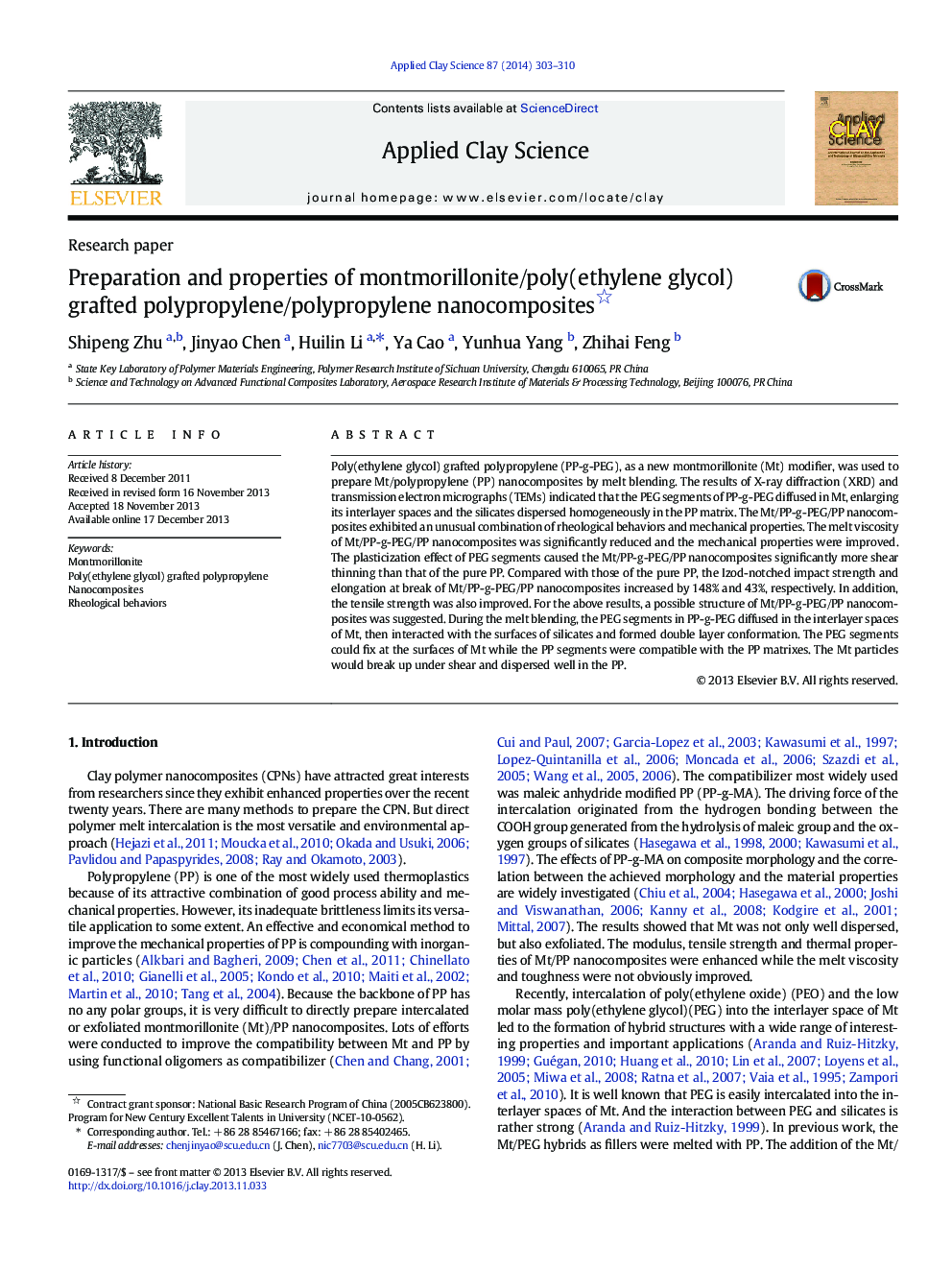| کد مقاله | کد نشریه | سال انتشار | مقاله انگلیسی | نسخه تمام متن |
|---|---|---|---|---|
| 1694978 | 1519087 | 2014 | 8 صفحه PDF | دانلود رایگان |
• A new Mt modifier poly(ethylene glycol) grafted (PP-g-PEG) was synthesized.
• The Mt/PP nanocomposites showed an unusually rheological behavior.
• The mechanical properties of Mt/PP nanocomposites were improved significantly.
• A possible structure of intercalated Mt was proposed.
Poly(ethylene glycol) grafted polypropylene (PP-g-PEG), as a new montmorillonite (Mt) modifier, was used to prepare Mt/polypropylene (PP) nanocomposites by melt blending. The results of X-ray diffraction (XRD) and transmission electron micrographs (TEMs) indicated that the PEG segments of PP-g-PEG diffused in Mt, enlarging its interlayer spaces and the silicates dispersed homogeneously in the PP matrix. The Mt/PP-g-PEG/PP nanocomposites exhibited an unusual combination of rheological behaviors and mechanical properties. The melt viscosity of Mt/PP-g-PEG/PP nanocomposites was significantly reduced and the mechanical properties were improved. The plasticization effect of PEG segments caused the Mt/PP-g-PEG/PP nanocomposites significantly more shear thinning than that of the pure PP. Compared with those of the pure PP, the Izod-notched impact strength and elongation at break of Mt/PP-g-PEG/PP nanocomposites increased by 148% and 43%, respectively. In addition, the tensile strength was also improved. For the above results, a possible structure of Mt/PP-g-PEG/PP nanocomposites was suggested. During the melt blending, the PEG segments in PP-g-PEG diffused in the interlayer spaces of Mt, then interacted with the surfaces of silicates and formed double layer conformation. The PEG segments could fix at the surfaces of Mt while the PP segments were compatible with the PP matrixes. The Mt particles would break up under shear and dispersed well in the PP.
A possible structure of intercalated Mt.Figure optionsDownload as PowerPoint slide
Journal: Applied Clay Science - Volume 87, January 2014, Pages 303–310
